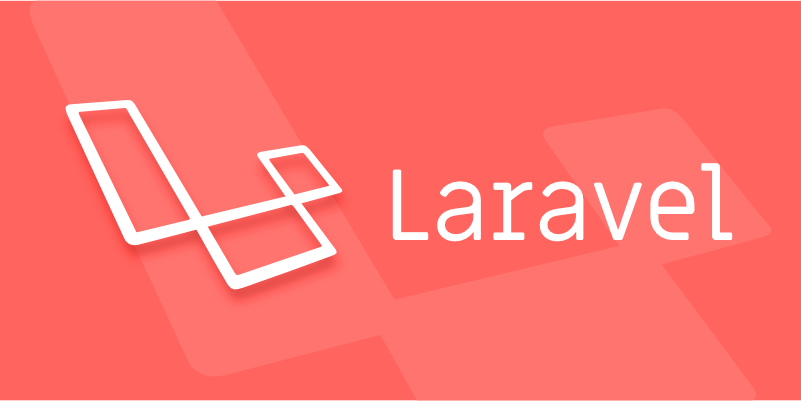Laravel provides built-in rate limiting to prevent excessive requests, which can be implemented using the throttle middleware. 1. Basic throttling can be applied directly in routes with syntax like 'throttle:5,1', allowing 5 requests per minute. 2. For more control, named rate limiters are defined in RouteServiceProvider, enabling dynamic rules based on user roles or IP addresses. 3. Custom responses for rate limit exceedance require exception handling or middleware extension. 4. Rate limit counters are tracked via the cache system, so clearing the cache resets the count. 5. Proper production setup includes configuring Redis timeouts, monitoring memory, and setting up failover mechanisms.

If you're using Laravel and want to prevent users from making too many requests in a short time, rate limiting is the way to go. Laravel has built-in support for this, and it’s pretty straightforward to set up — especially if you’re using the default throttle middleware.

Basic Throttling with Middleware
Laravel's throttle middleware lets you limit how many times a route or group of routes can be accessed within a certain number of minutes. This is commonly used on login or registration routes to prevent brute-force attacks.
You can apply it directly in your routes like this:

Route::middleware('throttle:5,1')->group(function () {
Route::post('/login', [AuthController::class, 'login']);
});In this example, the user can only make 5 requests per minute (60 seconds). If they exceed that, Laravel will return a 429 Too Many Requests response.
You can adjust those numbers as needed. For example, throttle:30,1 would allow 30 requests per minute.

Using Named Rate Limiters for More Control
Sometimes you need more flexibility — maybe different routes have different limits, or you want to base the limit on something like user roles or API keys. That’s where named rate limiters come in handy.
You define them in App\Providers\RouteServiceProvider, inside the configureRateLimiting method. Here's an example:
use Illuminate\Cache\RateLimiting\Limit;
use Illuminate\Support\Facades\RateLimiter;
RateLimiter::for('api', function ($request) {
return Limit::perMinute(60)->by(optional($request->user())->id ?: $request->ip());
});Then, in your route file:
Route::middleware('throttle:api')->group(function () {
Route::get('/data', [DataController::class, 'index']);
});This gives you a central place to manage rate limits and makes it easier to reuse across multiple routes. You can also use closures to create dynamic rules based on request data.
Customize Response and Clearing Limits
By default, when someone hits the rate limit, Laravel returns a JSON response like this:
{
"message": "Too Many Attempts."
}But what if you want to customize that? You can’t do it directly through the throttle middleware, but you can extend it or catch the exception manually.
Also, keep in mind that Laravel uses the cache system to track attempts. So if you're testing locally or debugging, remember to clear the cache if you want to reset the counter:
- For Redis: flush it or delete the specific key.
- For other drivers like file or database: try
php artisan cache:clear.
And don’t forget — if you're using something like Redis, make sure it’s configured correctly in production.
- Set appropriate timeouts
- Monitor memory usage
- Make sure failover mechanisms are in place if needed
That’s the core of setting up rate limiting in Laravel. It's not complicated, but there are enough moving parts — like cache drivers and custom responses — that it's easy to miss a small detail.
The above is the detailed content of How to implement rate limiting on Laravel routes?. For more information, please follow other related articles on the PHP Chinese website!

Hot AI Tools

Undress AI Tool
Undress images for free

Undresser.AI Undress
AI-powered app for creating realistic nude photos

AI Clothes Remover
Online AI tool for removing clothes from photos.

Clothoff.io
AI clothes remover

Video Face Swap
Swap faces in any video effortlessly with our completely free AI face swap tool!

Hot Article

Hot Tools

Notepad++7.3.1
Easy-to-use and free code editor

SublimeText3 Chinese version
Chinese version, very easy to use

Zend Studio 13.0.1
Powerful PHP integrated development environment

Dreamweaver CS6
Visual web development tools

SublimeText3 Mac version
God-level code editing software (SublimeText3)

Hot Topics
 Creating Custom Validation Rules in a Laravel Project
Jul 04, 2025 am 01:03 AM
Creating Custom Validation Rules in a Laravel Project
Jul 04, 2025 am 01:03 AM
There are three ways to add custom validation rules in Laravel: using closures, Rule classes, and form requests. 1. Use closures to be suitable for lightweight verification, such as preventing the user name "admin"; 2. Create Rule classes (such as ValidUsernameRule) to make complex logic clearer and maintainable; 3. Integrate multiple rules in form requests and centrally manage verification logic. At the same time, you can set prompts through custom messages methods or incoming error message arrays to improve flexibility and maintainability.
 Adding multilingual support to a Laravel application
Jul 03, 2025 am 01:17 AM
Adding multilingual support to a Laravel application
Jul 03, 2025 am 01:17 AM
The core methods for Laravel applications to implement multilingual support include: setting language files, dynamic language switching, translation URL routing, and managing translation keys in Blade templates. First, organize the strings of each language in the corresponding folders (such as en, es, fr) in the /resources/lang directory, and define the translation content by returning the associative array; 2. Translate the key value through the \_\_() helper function call, and use App::setLocale() to combine session or routing parameters to realize language switching; 3. For translation URLs, paths can be defined for different languages ??through prefixed routing groups, or route alias in language files dynamically mapped; 4. Keep the translation keys concise and
 Working with pivot tables in Laravel Many-to-Many relationships
Jul 07, 2025 am 01:06 AM
Working with pivot tables in Laravel Many-to-Many relationships
Jul 07, 2025 am 01:06 AM
ToworkeffectivelywithpivottablesinLaravel,firstaccesspivotdatausingwithPivot()orwithTimestamps(),thenupdateentrieswithupdateExistingPivot(),managerelationshipsviadetach()andsync(),andusecustompivotmodelswhenneeded.1.UsewithPivot()toincludespecificcol
 Sending different types of notifications with Laravel
Jul 06, 2025 am 12:52 AM
Sending different types of notifications with Laravel
Jul 06, 2025 am 12:52 AM
Laravelprovidesacleanandflexiblewaytosendnotificationsviamultiplechannelslikeemail,SMS,in-appalerts,andpushnotifications.Youdefinenotificationchannelsinthevia()methodofanotificationclass,andimplementspecificmethodsliketoMail(),toDatabase(),ortoVonage
 Understanding and creating custom Service Providers in Laravel
Jul 03, 2025 am 01:35 AM
Understanding and creating custom Service Providers in Laravel
Jul 03, 2025 am 01:35 AM
ServiceProvider is the core mechanism used in the Laravel framework for registering services and initializing logic. You can create a custom ServiceProvider through the Artisan command; 1. The register method is used to bind services, register singletons, set aliases, etc., and other services that have not yet been loaded cannot be called; 2. The boot method runs after all services are registered and is used to register event listeners, view synthesizers, middleware and other logic that depends on other services; common uses include binding interfaces and implementations, registering Facades, loading configurations, registering command-line instructions and view components; it is recommended to centralize relevant bindings to a ServiceProvider to manage, and pay attention to registration
 Understanding Dependency Injection in Laravel?
Jul 05, 2025 am 02:01 AM
Understanding Dependency Injection in Laravel?
Jul 05, 2025 am 02:01 AM
Dependency injection automatically handles class dependencies through service containers in Laravel without manual new objects. Its core is constructor injection and method injection, such as automatically passing in the Request instance in the controller. Laravel parses dependencies through type prompts and recursively creates the required objects. The binding interface and implementation can be used by the service provider to use the bind method, or singleton to bind a singleton. When using it, you need to ensure type prompts, avoid constructor complications, use context bindings with caution, and understand automatic parsing rules. Mastering these can improve code flexibility and maintenance.
 Strategies for optimizing Laravel application performance
Jul 09, 2025 am 03:00 AM
Strategies for optimizing Laravel application performance
Jul 09, 2025 am 03:00 AM
Laravel performance optimization can improve application efficiency through four core directions. 1. Use the cache mechanism to reduce duplicate queries, store infrequently changing data through Cache::remember() and other methods to reduce database access frequency; 2. Optimize database from the model to query statements, avoid N 1 queries, specifying field queries, adding indexes, paging processing and reading and writing separation, and reduce bottlenecks; 3. Use time-consuming operations such as email sending and file exporting to queue asynchronous processing, use Supervisor to manage workers and set up retry mechanisms; 4. Use middleware and service providers reasonably to avoid complex logic and unnecessary initialization code, and delay loading of services to improve startup efficiency.
 Handling exceptions and logging errors in a Laravel application
Jul 02, 2025 pm 03:24 PM
Handling exceptions and logging errors in a Laravel application
Jul 02, 2025 pm 03:24 PM
The core methods for handling exceptions and recording errors in Laravel applications include: 1. Use the App\Exceptions\Handler class to centrally manage unhandled exceptions, and record or notify exception information through the report() method, such as sending Slack notifications; 2. Use Monolog to configure the log system, set the log level and output method in config/logging.php, and enable error and above level logs in production environment. At the same time, detailed exception information can be manually recorded in report() in combination with the context; 3. Customize the render() method to return a unified JSON format error response, improving the collaboration efficiency of the front and back end of the API. These steps are






